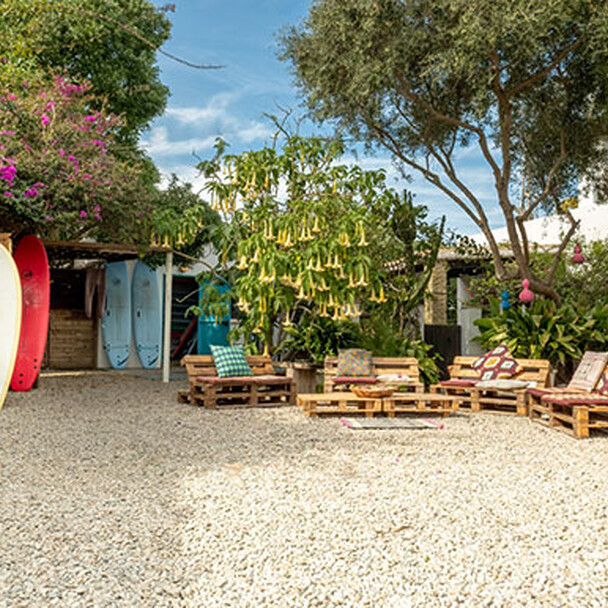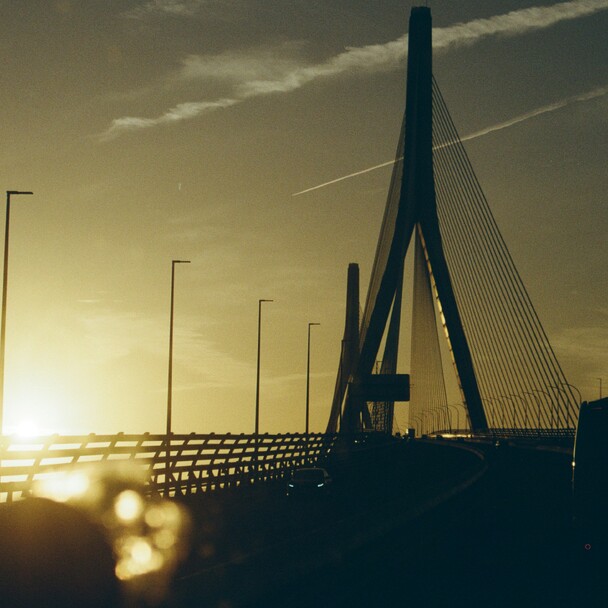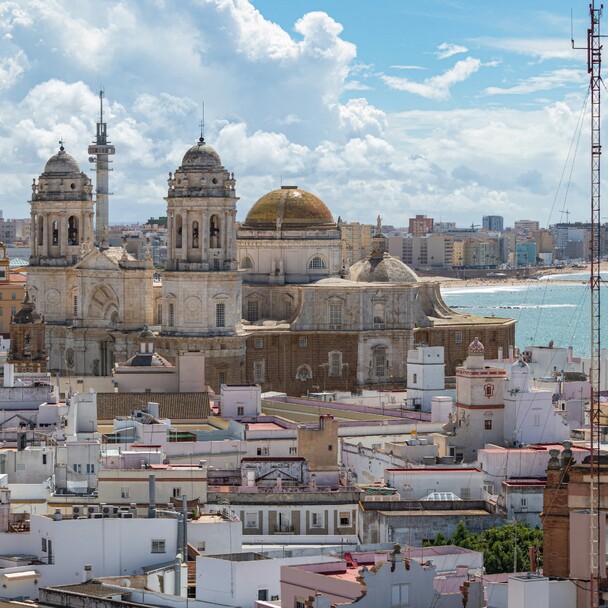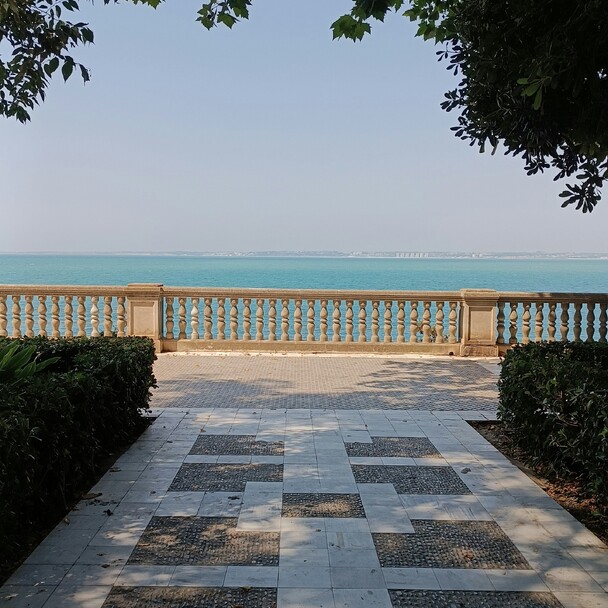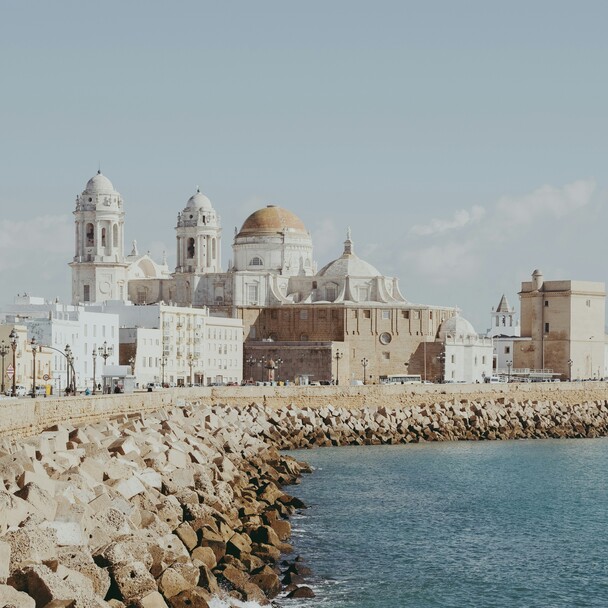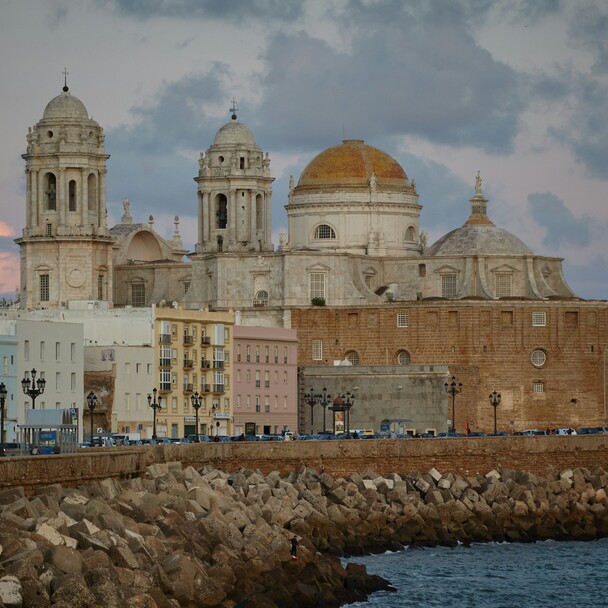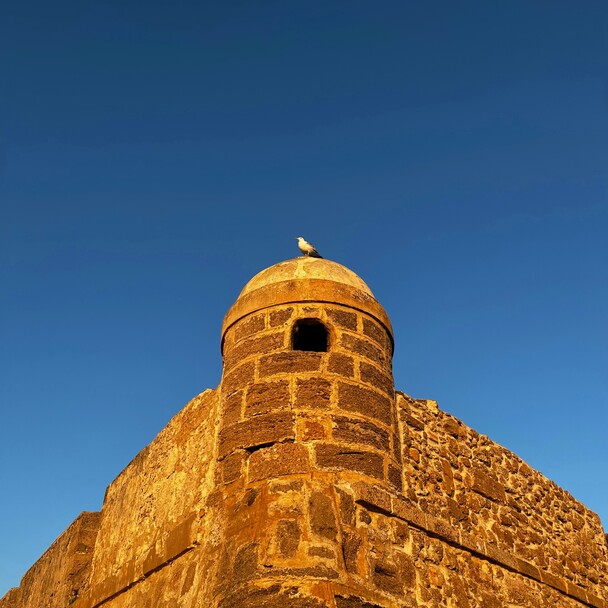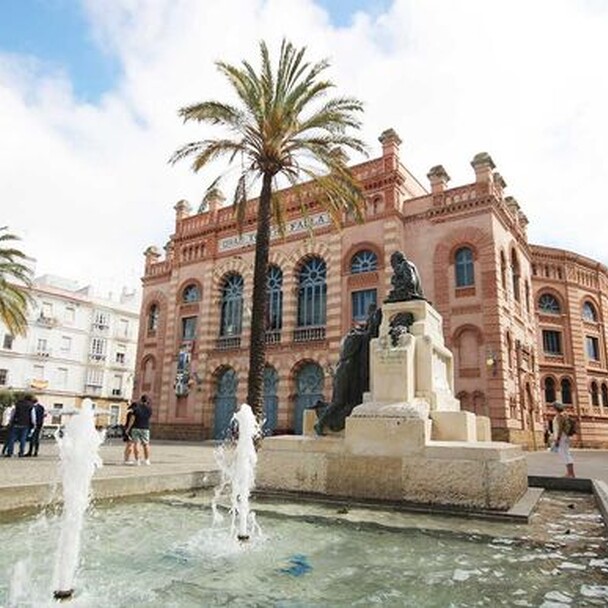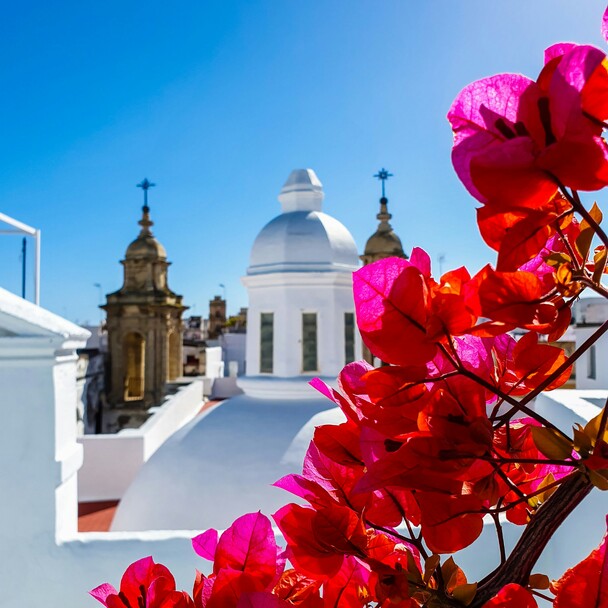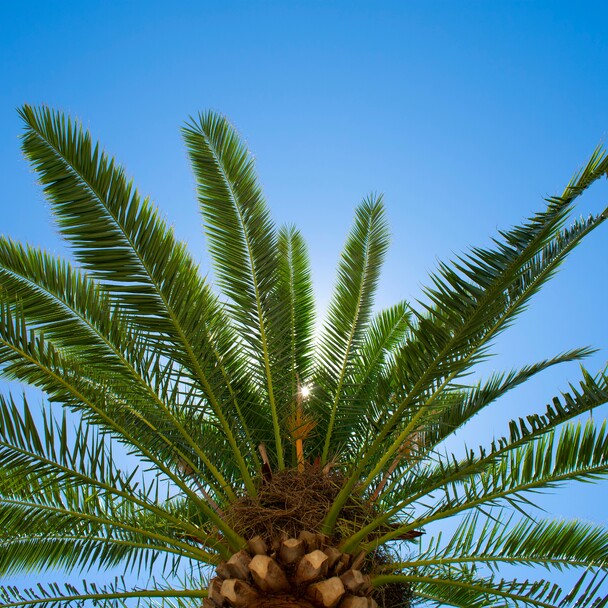Surfing in Cádiz - Your surf guide for the province of Cádiz
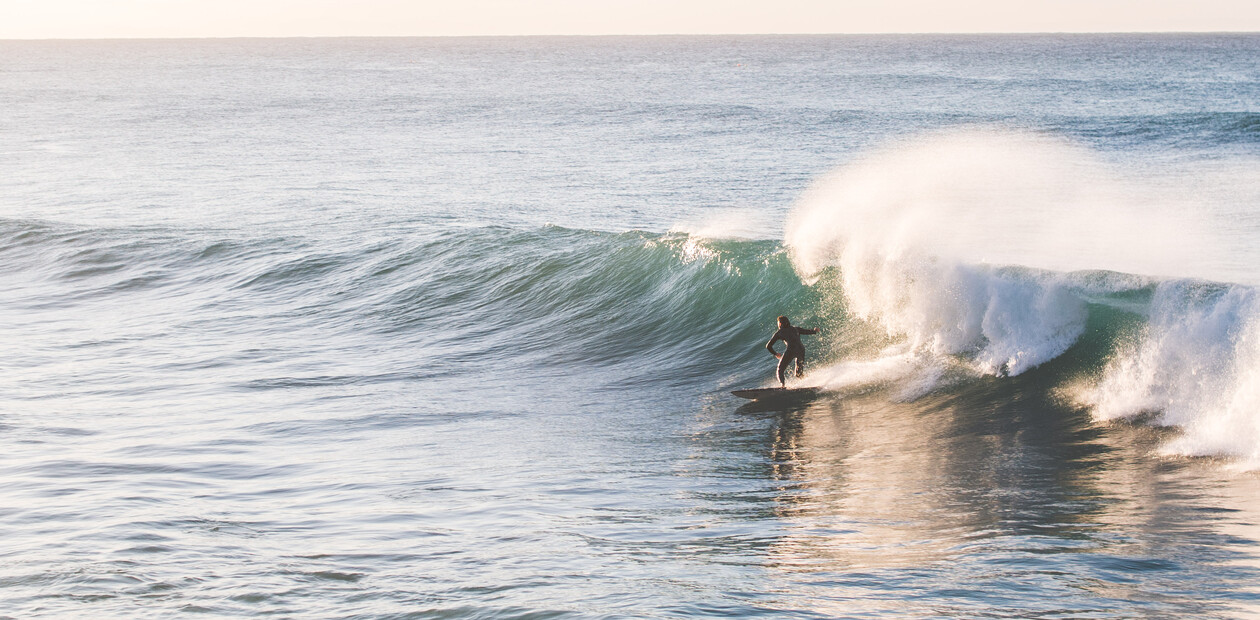
- Surfing in Cádiz
- The best surf spots in Cádiz
- Surfing in El Palmar
- Best time to surf in Cádiz
- Surfing calendar Andalusia
- Cádiz weather
- Surf school & surf store in Cádiz
- Surfcamp Cádiz
- Yoga in Cádiz
- Cádiz - more than just surfing
- Surf food: Our Cádiz restaurant tips
- The top Cádiz sights
- The bridge of Cádiz
- Cádiz Old Town
- Cádiz - Cathedral of the Holy Cross above the sea
- Castillo de Santa Catalina in Cádiz
- Gran Teatro Falla
- Town hall of Cádiz
- Torre Tavira - Marvel at the Camera Obscura in Cádiz
- Cádiz - Botanical Garden "Parque Genovés"
- Cádiz beach
- Where is Cádiz located?
- Cádiz Map
- Cádiz airport and arrival
- Cádiz - the correct pronunciation
- Conclusion
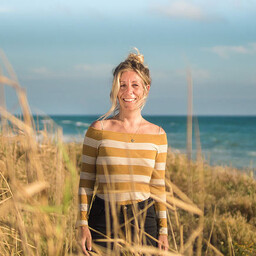
Jana is responsible for the website and blog at A-Frame. As a digital nomad and surf lover, she can work from anywhere in the world. She has currently opted for the Allgäu and El Palmar. For the Allgäu because of the love and for El Palmar because of the waves.
Surfing in Cádiz
Surfing in Cádiz has long ceased to be an insider tip among Spaniards. El Palmar in particular is legendary for its excellent waves, good surf stores and relaxed vibe. The small coastal town is located in the province of Cádiz and boasts a relaxed atmosphere and plenty of nature. El Palmar translates as "the palm grove" and there are indeed many palm trees adorning the gardens, the streets and the beach. This beautiful place is home to our surf camp. We chose this location in the Cádiz region for a reason, as El Palmar offers consistently great waves and plenty of space for surfing. Today, more than ever, it is considered the surf mecca of Andalusia. The waves here are truly fantastic and beginners in particular will find great conditions all year round, even in winter. Advanced surfers will appreciate the consistency of this surf spot and the clean waves.

The best surf spots in Cádiz
The province of Cádiz is large and offers numerous very good surf spots. In addition to the absolute classic El Palmar, there are several other surf spots that you can explore on your own during your surfing vacation. These include surf spots in:
Cádiz city
Chiclana
Conil de la Frontera
El Palmar
Caños de Meca
Cádiz city
The northernmost surf spots in Andalusia are located just outside the city of Cádiz. The most famous spots are Las Caracolas, La Playita and La Cabañita, which are primarily beach breaks on the beaches north and south of the city center. One surf spot in Cádiz is also located directly on the city wall, but it can get quite crowded here.
Chiclana
Still in the province of Cádiz, but around 20 minutes from the city, is Chiclana. The surf spot is on the beach of the tourist resort of La Barrosa. It's a fairly long beach break - but it only runs in the right conditions. The surf spot needs a pretty big swell.
Conil de la Frontera
A little further on is the white village of Conil de la Frontera. From here, it's just a stone's throw to El Palmar, our favorite and home spot. If you prefer to surf in Conil and combine this with a stroll through the town, you can of course do that too. Although the beach break here is not known for its good quality, beginners can practise their take-off in the white water without the crowds.
El Palmar
We have already mentioned and praised this surf spot several times. In fact, El Palmar is very popular in the Spanish surf scene. So if you're in Cádiz to surf, you absolutely have to come to El Palmar. Here you have the freedom to choose your own peak on an 8 km long beach break. The waves here are constant all year round - rather small in summer and rather large in winter.
Los Caños de Meca
There are three surf spots in Caños de Meca, and each has its own characteristics. While the surf spot at the Trafalgar lighthouse is a right-hand longboard wave, Marisucia runs as an A-frame and is also great for longboarders. Apartamentos, on the other hand, is a nice left low-tide wave that is more suitable for advanced surfers.
More surf spots in the province of Cádiz
If you want even more surf spots and more detailed information on the individual spots, you can find them under surf spots on our website.
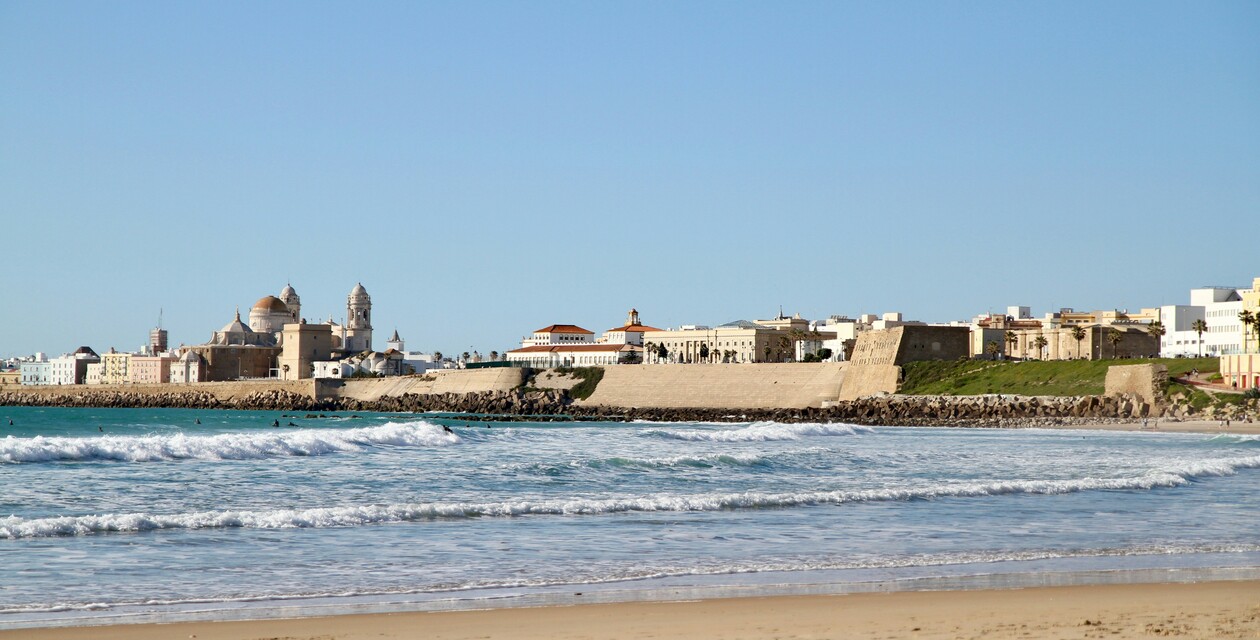
Surfing in El Palmar
Best time to surf in Cádiz
You can actually surf in Cádiz all year round. For beginners, there is always a beginner wave or white water to practice on. Advanced surfers love the period from September to May, as this is when bigger swells can roll in. What many people don't know: Especially from November to April, when it is really cold in Germany, you can enjoy the sun in the Cadiz region in shorts and a T-shirt. The climate is incredibly mild and just right for a surfing vacation in autumn, spring or winter. Many surfers even come to Andalusia especially to spend the winter.
Surfing calendar Andalusia
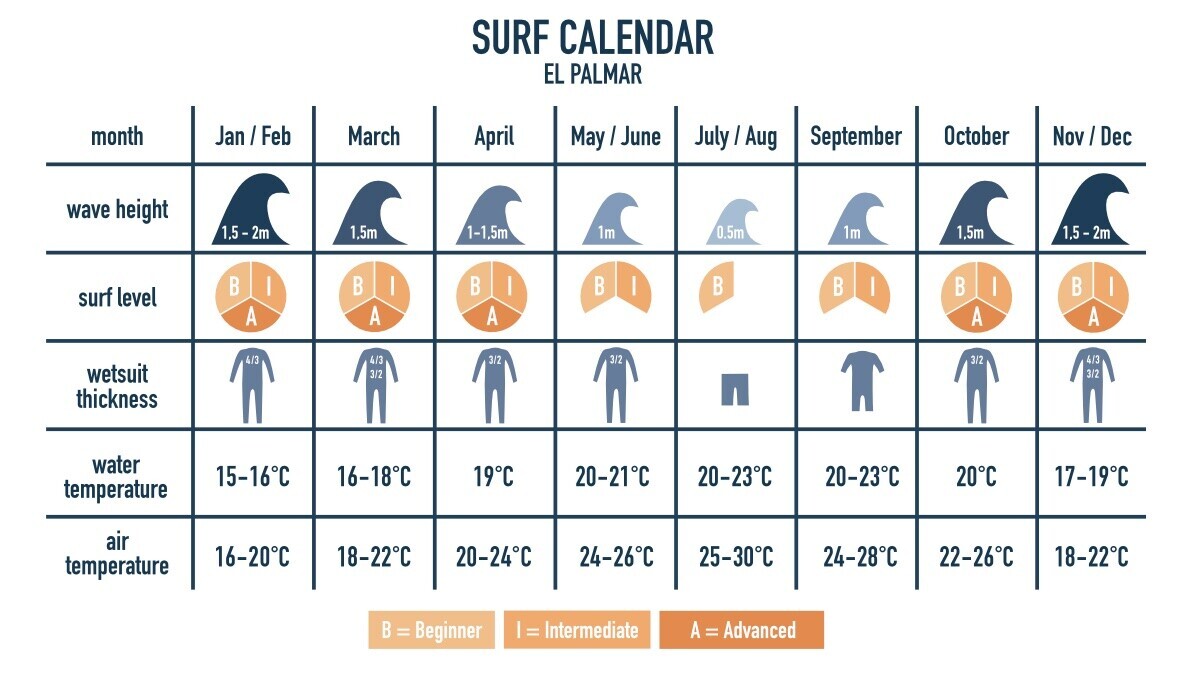
Cádiz weather
The climate and weather throughout Andalusia is often compared to that of California. It is therefore sunny and mild even in the northern European winter. Here in Andalusia, the sun shines 300 days a year, so the chances of a sunny surfing vacation are very good. It is not for nothing that the Costa de la Luz translates as "Coast of Light". The sun almost always shines in Andalusia and the temperatures range from mild to very warm, depending on the time of year. Due to its location by the sea, there is often a refreshing breeze on the coast.
Surf school & surf store in Cádiz
If you're traveling to Cádiz to surf, you can't miss El Palmar. You can book a surf course and learn to surf at our A-Frame surf school. If you want, you can book private coaching with one of our surf instructors and work specifically on your surfing technique. The A-Frame surf school is located directly in the A-Frame surf camp, and you can book a course with the staff - even spontaneously. The surf school is located right on the beach, so you only have to grab your surfboard and walk a few steps. Lessons are taught in German, English, Spanish or Dutch.
The O'Neill surf store is also located here. In this surf store you can buy wetsuits and surfboards. In addition to surfing equipment, you can also find fashion and jewelry here. It's well worth browsing through the surf store.
Surfcamp Cádiz
If you want to surf in Cádiz and not have to worry about anything else, we recommend a vacation in a surf camp. There are many beautiful surf camps in Cádiz - our favorite, like so many others, is in El Palmar. At the A-Frame surf camp, you live beautifully right by the sea. All guests have their own accommodation and privacy if they wish. This makes the camp perfect for families, couples and friends. Single travelers are also very welcome, as everyone gets together for meals, BBQs or the legendary cocktail evenings and has a wonderful time together. The surf courses take place in small groups, adapted to age and surfing level. In addition to the excellent surf courses and high-quality yoga classes, it is the fantastic food that always puts a sparkle in the eyes of all guests - and the warmth of the entire team.
Yoga in Cádiz
If you want to do yoga in Cádiz, you will certainly find many yoga studios in the city of Cádiz itself. The most beautiful studio - and a real insider tip - is located around 50 minutes away, in El Palmar. Here, the A-Frame Yoga House is nestled right by the sea and offers a fantastic view of the Atlantic Ocean during yoga classes. The timetable includes various yoga classes with different styles and teachers. Equipment such as yoga mats, blocks, straps, blankets and eye pillows are available. All you need is yourself and comfortable clothes
.Cádiz - more than just surfing
Cádiz in Spain is a real gem, right by the sea - and not just because of the good surf spots. The dome of the cathedral rises above the old town like a golden pearl. The evening sun bathes Cádiz in a dreamy light. After sunset, the residents stream out of their houses and the alleyways of the old town fill with people, laughter and chatter. Now is the best time to discover the many bars and restaurants. During the day, the city offers a wealth of historical sights. It smells of the sea, fish and orange trees. Cádiz is the oldest city in Europe and has seen a lot. On a trip to Cádiz, you can really feel the history of the city. Look forward to a cozy port city with numerous bars, historic buildings, a beach and many activities such as surfing and yoga. We now reveal the best tips for sights and restaurants between your surf sessions:
Surf food: Our Cádiz restaurant tips
The Restaurante El Faro de Cádiz is a tip from surf instructor Alvaro. He has lived in Cádiz for many years and knows exactly where to eat really well here. At El Faro, it's best to eat at the bar and order tapas. They are delicious here.
The Taberna Casa Manteca is also one of Alvaro's insider tips. It is a typical Andalusian taberna with tapas from €1.80 and beer (cerveza) for €1.50. The tapas bar is rustic and cozy - in Germany you would call it quaint - and full to the ceiling with pictures of bulls and bullfighters. It doesn't get much more Spanish than this.
Vegetarians and vegans get their money's worth at La Veganesa. But non-vegans will also love La Veganesa. From vegan cakes to food and tapas, there is so much to choose from that you'll have to come back. The vegan albóndigas (meatballs), the eggplant-covered lasagna and the soy-based chicken skewers are particularly delicious. We had salmorejo for lunch, which was also really tasty.
At La Vaca Atada, you can enjoy a delicious breakfast and smoothies in the morning, followed by cakes, coffee, wraps, quiche and burgers. The vegetarian burger in particular is really tasty and the staff are very friendly.
The top Cádiz sights
Even if you come to Cádiz to surf, you should take a close look at the city and the surrounding area. There are some real treasures to be discovered here: Cádiz is full of beautiful sights. The narrow streets of the famous old town alone are a highlight. Then there are the beaches, the cathedral, the theater, the tapas bars and much more. Have fun discovering the most beautiful places and must-dos in Cádiz.
The bridge of Cádiz
Many people know the famous Cádiz bridge from postcards or vacation photos. The Puente de la Constitución de 1812, or Puente de la Pepa for short, is almost three kilometers long and the second road bridge in Cádiz. It connects the city with Puerto Real. Depending on which direction you are coming from, this bridge saves you the detour of traveling to Cádiz via San Fernando.
Cádiz Old Town
You can discover most of the sights all by yourself by taking a stroll through the old town. Many of the historic buildings in Cádiz are located in the old town and can therefore be reached on foot. The old town with its narrow streets and small bars is ideal for romantics, as you can lose yourself here for hours. Orange trees and palm trees adorn the streets and squares, and there are small stores, cafés and restaurants. A stroll through the old town of Cádiz is like a voyage of discovery.
Cádiz - Cathedral of the Holy Cross above the sea
The cathedral is one of the most important sights in Cádiz and towers over almost every building. The golden dome can be seen from everywhere in the city. Like a shining mother-of-pearl shell with a golden pearl, the cathedral of Cádiz rises out of the sea of houses and lives up to its name: Santa Cruz sobre el Mar or Santa Cruz sobre las Aguas is also the name of the Catedral de Cádiz (Cathedral of the Holy Cross over the Sea). It is actually located right by the sea. If you climb its west tower, you have a fantastic view over the city and the Atlantic Ocean. The cathedral was built between 1722 and 1838 and was finally declared a Bien de Interés Cultural in 1931. Due to the long construction period, various architectural styles such as baroque, rococo and neoclassical have blended together to create an ornate building.
Castillo de Santa Catalina in Cádiz
Colored boats bob in the sea in front of the Santa Catalina castle and the residents of Cádiz loll in the sun on the beach. The scene is tranquil and relaxed. The castle somehow doesn't stand out at all. Yet the Castillo is an important sight. The star-shaped fort was built in the 17th century on rock heaped up in the sea. The fort is located in the west of the city and borders the beach "La Caleta", which we will talk about below. You can explore the building independently or on a tour. Public events are also held here from time to time.
Gran Teatro Falla
The Gran Teatro Falla is a late bloomer in European architectural history and modern at the same time. While the whole of Europe had long since caught Oriental fever and buildings with corresponding elements were springing up everywhere, Spain was still hesitant. This certainly has to do with the country's history, as Spain was conquered by the Moors in the Middle Ages (you can still find the cultural remnants of this period everywhere in Andalusia today), and it was long considered frowned upon to incorporate oriental style elements into the architecture. The Gran Teatro Falla is the first building in modern Spain to incorporate Islamic elements. The result is a beautiful masterpiece in which international theater groups and artists from all over Europe perform today.
Tip: Cádiz is considered a cultural stronghold in Andalusia. Today, you can still marvel not only at the Gran Teatro Falla, but also the remains of the Roman theater from the Roman Empire. It is located next to the Church of the Holy Cross. The theater was only rediscovered in 1980 during construction work, as it had been built over by various modern buildings.
Town hall of Cádiz
Cádiz town hall is the gateway to the city, so to speak. You can start your sightseeing tour from here. The beach and harbor are also not far away. The town hall is located in the impressive Plaza de San Juan de Dios, where the council has been meeting since the 16th century. The square is very imposing, with a fountain and lined with palm trees. The town hall itself is considered one of the most beautiful buildings in the city and dates back to the 18th century. According to legend, Cádiz was founded by Hercules himself. He is enthroned on the triangular pediment of the town hall, which was built in the Sabelline and neoclassical style.
Torre Tavira - Marvel at the Camera Obscura in Cádiz
When you visit the Torre Tavira, you can breathe in a piece of Andalusian history. Cádiz is famous worldwide for its watchtowers - 134 in total - which bear witness to the trade and prosperity that Cádiz experienced in the 18th century. The Torre Tavira towers 45 meters high above the white roofs of Cádiz and offers a fantastic panoramic view of the city. The observation tower dates back to the 18th century and is home to the famous Camera Obscura of Cádiz. The Camera Obscura was the first in Spain in 1994 and today makes it possible to follow the urban development of Cádiz in the 21st century. It projects images onto a white screen located in the center of a completely dark room in the tower. The projected images are bright and colorful and reflect the events taking place outside the tower at the same moment.
Cádiz - Botanical Garden "Parque Genovés"
Genovés Park is the green calling card of Cádiz. The botanical garden is located right by the sea, and you can take a break from the hustle and bustle of the old town here. Here you can stroll over romantic bridges, past tranquil waterfalls and sculptures. The palm trees and artfully trimmed trees make you feel a bit like Alice in Wonderland. The Parque Genovés is the ideal place to take a break from a day of sightseeing. There are also numerous playgrounds and lots of exciting things for children to discover, such as a dinosaur sculpture. Many theater and concert performances take place on the open-air stage in summer.
Cádiz beach
Cádiz is a peninsula and is therefore surrounded by the sea. There are many beaches here for relaxing, swimming or surfing. The offshore beaches such as Playa de Chato or Playa la Cortadura are ideal for surfing, kitesurfing or windsurfing. However, an even better tip for surfing is El Palmar.
You don't even have to leave Cádiz to soak up the sun at a beach, as there is even a beach for swimming and bathing in the city, Playa la Caleta. So you can take a relaxing break on the beach during your trip to Cádiz and then continue discovering the sights or go on a shopping tour.
Fun fact: James Bond in Cádiz
Did you know that the James Bond film "Die Another Day" was shot in Cádiz? The famous scene where Halle Berry gets out of the water was filmed at Playa la Caleta in Cádiz. If you look closely, you can see the wall and the colorful boats. The movie is actually set in Cuba, but Cádiz is apparently so similar to Havana that filming took place in Spain. The old royal bathhouse was specially transformed into a Caribbean bar for the film, so that the quay wall looks just like the Malecón in Havana. The reason for filming in Cádiz was probably the beautiful light. It is not for nothing that the coast here in Andalusia is called Costa de la Luz, which translates as Coast of Light.
Do you recognize the beach of Cádiz?
Where is Cádiz located?
Cádiz is located on the Atlantic coast in Andalusia, the fiery south of Spain. Seville lies to the north, Portugal to the west and Gibraltar to the southeast. However, Cádiz is not just a city, but also an entire province, to which El Palmar also belongs. A distinction is therefore made between the city of Cádiz and the province of Cádiz. The city is of course also located in the province.
Cádiz Map
Cádiz airport and arrival
Getting to Cádiz is very easy. Although there is no airport, the airports in Jerez de la Frontera (30 minutes) and Seville (1.5 hours) are not far away. So you can easily reach Cádiz by car, bus or train. Incidentally, rental cars are pretty cheap in Spain. Check out Stiftung Warentest winner Check24.
Cádiz train station
If you are traveling to Cádiz by train, you will arrive at Cádiz train station. From here you already have a great view of the harbor and it is only a few minutes to the Plaza de San Juan de Dios, where the town hall of Cádiz is located. The square is also the perfect starting point for a discovery tour of Cádiz.
Parking in Cádiz
Cádiz is just under an hour's drive from El Palmar. There are many options for parking your car in Cádiz. There are several paid parking lots and parking garages around the old town. Our tip: There is a large parking lot at the train station. You will usually find a free space there and you can quickly reach the old town. You can even see the first sights from here. From the station, you can already see the harbor and, if you're lucky, an impressive ship at anchor. On the way to the city center, you will automatically pass the famous Plaza de San Juan de Dios and the town hall of Cádiz.
Cádiz - the correct pronunciation
And here's an extra tip, as we know that many non-Spanish people are unsure about how Cádiz is actually pronounced. Some emphasize the "á" and others the "i", but nobody knows for sure. So that you know how the city is really pronounced when you visit Cádiz, we will tell you here what is correct: the correct pronunciation is the "á". This is very easy to remember, as the so-called accento agudo (') indicates in Spanish that the "á" is emphasized here. In phonetic transcription, Cádiz looks like this: ['kadiθ].
By the way, this tip also applies to all other Spanish words with accento agudo, such as Málaga or Córdoba. The vowel with the accento agudo is always emphasized.
Conclusion
Cádiz offers excellent surfing conditions all year round. A mild climate and many additional activities such as yoga and sightseeing. The old town, beaches and restaurants add to the attractive atmosphere.
